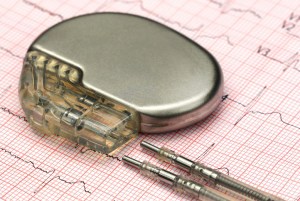Failing Pacemakers Show Us the High Cost of Replacing Defective Medical Devices
 When medical devices that have been implanted into a human body (like a pacemaker or an IUD, for example) fail, Medicare often covers the surgery to replace them. The Inspector General of the U.S. Department of Health and Human Services released a report that said Medicare has paid at least $1.5 billion over a decade to replace seven types of defective heart devices which failed in thousands of patients.
When medical devices that have been implanted into a human body (like a pacemaker or an IUD, for example) fail, Medicare often covers the surgery to replace them. The Inspector General of the U.S. Department of Health and Human Services released a report that said Medicare has paid at least $1.5 billion over a decade to replace seven types of defective heart devices which failed in thousands of patients.
A story in the New York Times said that this report is the first time that a government agency has attempted to assess the losses to taxpayers and patients from medical devices that malfunction and need to be removed. The report also said that the $15. billion figure that had been paid out between 2005 and 2014 was a “conservative estimate,” and that patients had also paid about $140 million in out-of-pocket costs.
It should be noted that this study focused on just seven types of defective pacemakers. It did not include the defective metal-on-metal hip replacement devices, transvaginal mesh implants and other defective devices that have caused injury and harm to patients and cost countless billions in revision surgeries.
How devices are approved by the FDA
Why, you might ask, are device manufacturers able to continue to sell these defective devices? Why does the FDA allow it? This is because the U.S. Food and Drug Administration uses a weaker standard for approving medical devices than it uses to approve new drugs.
Medical devices are divided into three general categories:
- Class I devices are low risk devices such as tongue depressors, dental floss and thermometers. These devices do not require approval, but the manufacturer must register their business and product with the FDA.
- Class II devices have the potential to pose some amount of risk if misused. Examples include power wheelchairs, prosthetic joints and hearing aids
- Class III devices must follow guidelines for Class I and Class II as they are higher risk devices, but they must also gain pre-market approval by the FDA, and they include pacemakers, heart valves and breast implants. About 10% of medical devices are in this category.
Health watchdog publication Health News Review Looked at some of the reasons these devices continue to be sold. They found:
- Ninety-nine percent of devices never have to provide clinical data.
- Defective devices that were removed from the market can still be used to demonstrate “substantial equivalence” required for new devices.
- The devices that are subject to scientific review face flimsy scientific standards.
The Health News article pointed out that journalists can help improve reporting on defective medical devices by revealing that just because a product has been registered, cleared and approved does not mean that the product does what it is supposed to do or that the product is safe, and that they should calculate the true cost of medical device failures.
Those who have been suffering from the pain and other effects of a defective medical device in the Washington, D.C. area should speak with an attorney to learn about legal options.
Please contact Paulson & Nace, PLLC through this contact form or by calling 202-463-1999.

For more than 40 years, Barry J. Nace has worked to protect the rights of victims of medical malpractice and other personal injuries. Throughout his career, he has proven that multimillion-dollar awards are not a matter of luck, but the result of experience, hard work, outstanding trial skills, and an unquestioned dedication to justice. To date, Mr. Nace has produced dozens of verdicts and settlements in excess of $1 million with three in excess of $30 million. Read more about Barry J. Nace.
